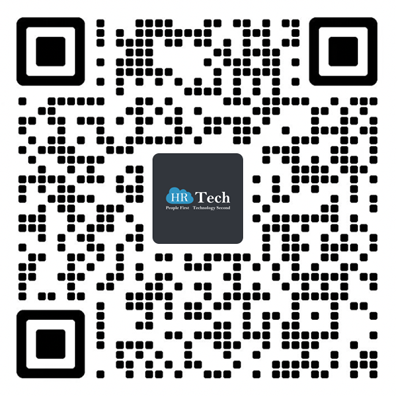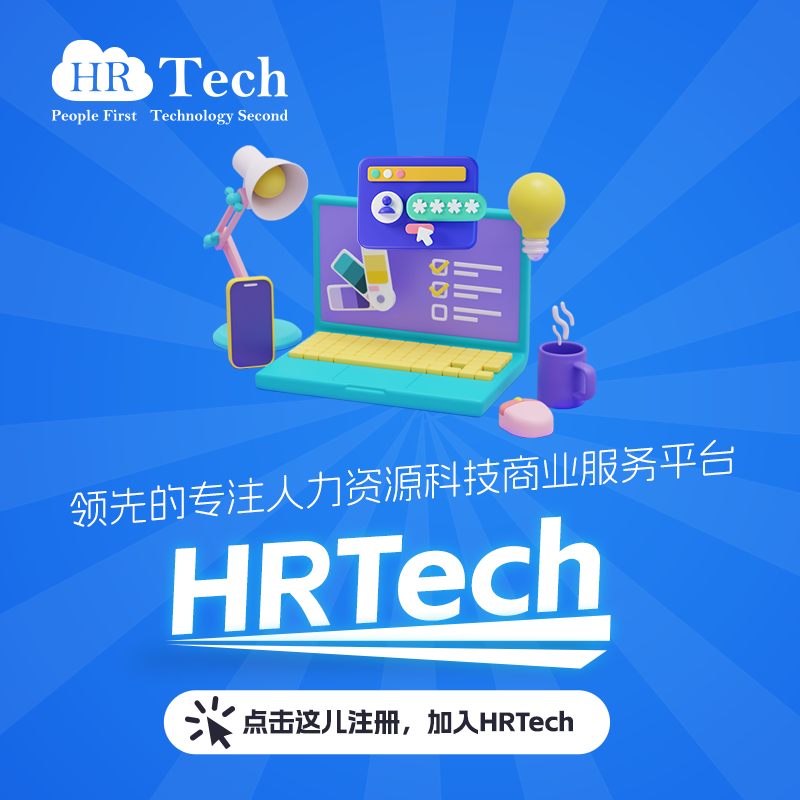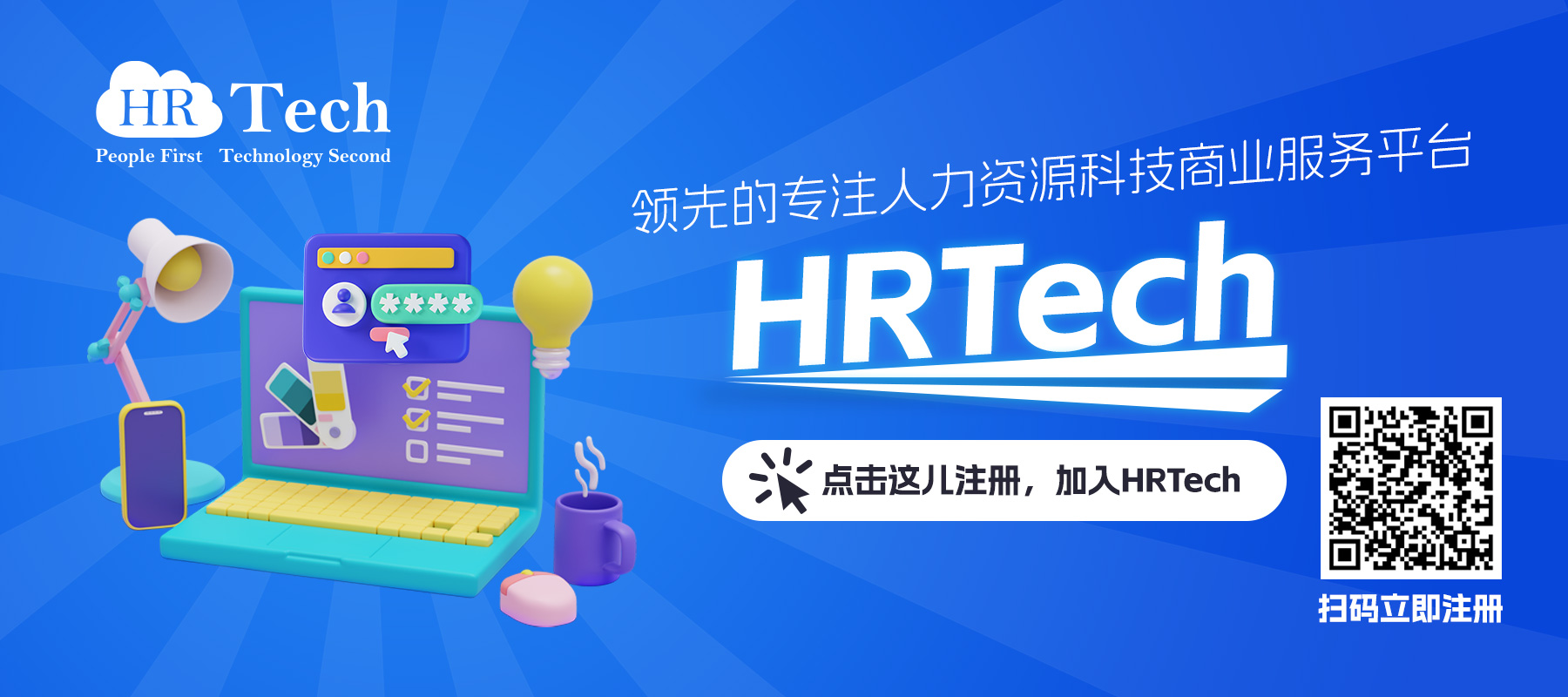观点
HR的终极挑战:如何提高员工敬业度
来源| scoop it
你会不会感觉到工作环境变得有点糟糕?比如你的经理缺乏领导力,你没有看到你的团队能够创造出什么卓有成效的成果。
你可以采取的最简单的措施之一就是审视你的员工敬业度。
什么是员工敬业度?
员工敬业度不是休息室橱柜里储藏着员工最喜欢的零食时,员工对公司的喜爱。员工敬业度并不意味着每个人都能得到他们想要的东西。
员工敬业度意味着你拥有一支忠诚的员工队伍。员工在这里工作,并全面服务于公司。参与的员工生产更好的产品并提供更有意义的服务。
员工敬业度意味着员工可以激励他人创造更好的业务成果。员工敬业度不是人力资源计划,而是领导力计划。
我们倾向于员工偶尔会表现出敬业度。但我们不应该等员工自己偶尔表现出敬业度,而应该将员工敬业度作为员工每日工作的基础。展现良好员工敬业度的企业知道,员工应该每天保持员工敬业度,而不是一年一次,或者一生一次。
尽管如此,我们仍花费大量时间调查和研究创造员工敬业度的内容,希望能够复制理想条件。然而,我们还是错过了一个基本的关键点:员工敬业度是成功领导者学习和发展的基本业务能力。
如何建立员工敬业度?
有一些领导者似乎凭借个人魅力或以往的经验来建立员工敬业度。其他领导者则靠直觉来摸索一条建立高敬业度团队的道路。大多数领导者必须通过更加痛苦的反复试验来达到目标。但是很少有人知道如何系统地建立员工敬业度。相反,我们只是磕磕绊绊,希望达到最好。
幸运的是,建立员工敬业度还有更好的方法。这是一项商业技能,与其他技能一样,可以被定义,教授,理解,衡量和有效管理。
合适的环境+有吸引力的邀请+员工的选择=员工敬业度
我们等式中的第一个要素是组织的运营环境或我们所称的“员工体验”。
组织员工体验(OrgX)主要由组织的高级领导团队(执行领导者)建立和建设。
OrgX是执行领导者的责任。他们定义路线图并设置全局参数。他们通过人力资源,组织发展,人才管理,学习和发展等各种职能来协助他们的工作。
然而,具体谈到OrgX时,不应将责任转嫁给执行领导者。他们只负责组织战略愿景的这个关键方面。
我们这个等式的第二个要素是有吸引力的邀请,由组织内的核心领导负责。他们是每天与劳动力密切接触的“地面靴子”经理(核心领导者)。
核心领导者负责采取更广泛的员工体验,并根据个人情况对其进行调整。他们不应偏离其执行领导者制定的关键任务,但他们应该积极改进和调整员工体验以满足其团队的个人需求。我们可能会认为这是团队的员工体验或TeamX。
等式的第三个因素虽然会受到组织及其核心领导者的影响,但主要还是员工的选择。一个组织可以尝试聘用更有可能参与OrgX的员工,以培养这方面的成功,而核心领导者在建立TeamX时,要仔细考虑员工的适应性。
但是,最终是否选择参与完全取决于员工。员工必须对他们的选择负责(个人责任或IA)。
可以肯定的是,执行领导者和核心领导者应该与他们的员工合作,帮助他们了解他们为何、以什么方式选择参与,但是在适当延长邀请后,领导者有权要求问责制,并且个别员工应该愿意对他们是否参与决定负责。
所以,让我们改进了等式,现在看起来像这样:
我们的等式与我们在谈论员工敬业度时立即想到的有很大不同。这个等式不是让员工参与每年一次的人力资源活动,而是将参与(及其附带利益)的主要责任放在组织的领导者身上。此外,我们的等式不仅为领导驱动的员工敬业度提供了有用的定义,而且还帮助我们思考如何分配我们的责任,并指导我们在组织,团队和个人层面的努力。
员工敬业度的起点
我明白一些人可能会为这个等式中的巨大“通配符”(有很多个选项的意思)感到困扰,这是因为员工敬业度取决于员工是否选择参与的。然而,从雇员敬业度是由领导驱动的观念开始,至少领导者和组织知道如何合理建立等式的其他部分,以及之后要把责任置于何处。而且并不需要寻找和等待高敬业度的员工,而是有意识地在您的组织,团队和员工中培养员工敬业度,这个等式将帮助你掌控自己的努力进度。
最后一点。这个等式只是一个起点。定义每个方程的元素还有很多。
例如,我们的研究告诉我们,Org X或TeamX受到5个主要参与元素(意义,自主性,成长,影响和联系(我们称之为MAGIC元素,Meaning+Autonomy+Growth+Influence+Connection)的很大影响。
我们在DecisionWise上的工作是帮助您看到起点,即员工参与方程,然后帮助你确定从这一点开始的其他因素。掌握了这些信息后,领导者将能够从参与工作的员工身上获得巨大的收益,而不是等员工偶尔闪现一下敬业度。
以上内容由HRTechChina AI编译完成,仅供参考
观点
听听前美国总统奥巴马给领导者提的三项建议
来源|Forbes
2018年5月7日,前美国总统奥巴马在圣地亚哥召开的人才发展协会年度国际会议与博览会上登台亮相。现场观众座无虚席,他们一大早便在会场外面排上了长长的队,只为听听前总统在上午5点20分说的话。
如果你不熟悉ATD或者其他年会,你只要知道那是一个充满专业人员的地方就行了。他们常常担任当代组织的润滑剂,帮助员工发展现有岗位和未来岗位。
接着我们继续回到前总统的讲话,奥巴马的发言没有正式主题或者任何准备好的笔记,但基本上可以总结出三点:
使命
包容性
价值观
一
“想想你能做什么,而不是想做什么,”奥巴马说。他敦促领导人考虑使命的概念,而不是寻求一个花哨的称号。作为领导者,当你能够帮助那些团队的领先者挖掘最佳自我时,你正在帮助他们发展个人和角色的使命。
当我们设定一个例子,在这个例子中,我们的单一使命是攀登企业阶梯,那么这个头衔的真正目标是什么?是否要获得一个舒适的角落办公室,或者六位数/七位数的工资,或更多的人员,还是更大的部门预算?结果很可能会成为一种职业,最终不仅会感到空虚而且缺乏真正的意义。
奥巴马很清楚。如果你寻求一种以目的为动力的生活和事业,那么自然会带来回报。当我们首先寻求金钱,权力和权利时,这是一种值得追求的生活吗?
二
虽然奥巴马并没有使用包容性这个词,但他用一个轶事故事描绘出了丰富多彩的“包容性”肖像。
奥巴马表示,在白宫的岁月里,他几乎每天都会处于一个由各部门机构,游说者,利益相关者等领导人围绕的内圈中。
奥巴马说:“那些助理会把笔记和信息传递给主桌上的领导人。”他开玩笑说,正是在外围圈的人才是真正知道什么正在发生的人。
然而,即使在决策时,奥巴马给出的建议也是尽可能包容。奥巴马表示,他经常会呼吁那些坐在“外围圈子”上的人提出意见,想法和反馈。这可以教给我们所有人一个被称为跳跃级包容性的概念。
当我们不仅听取那些在“内圈”上的人,而且还倾听那些向主桌领导汇报的人时,我们会有相当大的收获。当我们跳过直接报告,并从这些链条的下游寻找信息或意见时,它可以提供出色而且往往不为人知的见解,从而使你的最终决策更加准确。
三
奥巴马总统的最后一条建议与价值观有关,这也正是我们的社会赖以存在的基础。
当我们诚实,善良,负责任,慷慨,尊重他人时,好事情必然会发生。奥巴马提醒我们,当我们是以好的价值观为基础的时候,这也意味着我们主观的想法值得赞扬,而不是因为我们存在的事实。
当他向右看时,他开玩笑说:“这是一张桌子。我们需要大家都同意这是一张桌子。这是事实。”
“价值观会让你度过难关和美好时光。它们是赋予你的意义和目的的东西。组织需要帮助人们成为更好的表演者,听从他们的内心。“
“进步并非不可避免,”他补充说,“但是,我认为,如果我们在日常运作方式中灌输目的,包容性和价值观,进步是不可避免的。”
以上内容由HRTechChina AI编译,仅供参考
观点
HR必须掌握的工具—人力资源价值链:给你的企业增值
文| Erik van Vulpen
来源| AI HR
“人力资源为组织带来什么价值?”这个问题一直很难回答。在本文中,我将讨论人力资源价值链。这不仅有助于此工具显示人力资源的附加值,而且还构成了人员分析的优秀框架。事实上,它有助于分析人力资源对业务成果的贡献。
研究中的人力资源价值链
人力资源价值链是显示人力资源如何为组织目标增加价值的工具。
经验证据表明人力资源管理实践,人力资源管理成果和组织结果之间存在积极的关系。
那么为什么人力资源努力展示其附加价值?
部分原因是因为每个组织都是独一无二的。在一个组织中起作用的因素不一定在另一个组织中起作用。
第二个原因是很难以非常实用的方式显示附加价值。人力资源价值链解决了这个问题。
人力资源价值链
那么,人力资源价值链是什么样的?
这是一个三步过程,人力资源管理活动,其次是人力资源管理结果和组织目标。它清楚地描述了人力资源活动如何导致组织目标。
人力资源管理活动和流程:效率指标
在链条的左侧,我们找到了人力资源管理活动。这些是使用所谓的效率度量衡量的。
例子包括:
雇用成本
聘请的时间/填补空缺的时间
学习和发展预算
培训时间(以天为单位)
上次晋升的时间
所有这些衡量指标都能衡量人力资源流程,并提供关于人力资源职能效率的信息。但是它并没有表现出人力资源完成目标的程度,也就是人力资源效率。
我喜欢提及那些专注于人力资源管理流程,拥有一级人力资源组织的组织。他们的主要重点是节约成本,通过优化这些效率指标来实现。
例如,如果他们可以降低聘用成本,同时又保持聘用的稳定时间,他们会更有效率。但这立即显示了这些1级人力资源组织的巨大弱点:他们专注于降低人力资源成本 - 因此将人力资源视为成本中心,而不是关注人力资源增加的价值。
换句话说,人力资源效率并没有说明人力资源如何为企业做出贡献。
人力资源管理成果:有效性指标
在第二类中,我们观察了人力资源管理的结果。这些是传统上被视为重要的人力资源关键绩效指标的结果。
例子包括:
订婚
员工的保留/流失
缺勤率
个人表现
团队表现
雇用质量
所有这些指标都提供了有关员工工作情况的信息。并且涉及到了人力资源和生产线管理。
例如,当参与度较高时,HR比参与度较低时更有效。对于员工缺席的保留和(相反)也是如此。
人力资源有效性的一部分是管理人员执行预期的人力资源实践的程度。人力资源部可以完成一项繁重的工作,但如果管理人员不善,员工将会缺席,而且更有可能离职。
最重要的是要认识到,我们的大部分人力资源活动旨在实现积极的人力资源成果。
例如:
我们不想花太多时间来引进新人,否则我们会失去最佳人选,从而使我们的雇佣质量下降;
我们正在培训我们的员工,使他们的表现更好并保留下来;
我们致力促进员工的健康状况,以减少缺勤等等;
二级人力资源组织专注于人力资源管理成果。他们不关注成本节约,而是关注如何以具有成本效益的方式达到人力资源成果。
组织目标
最后一类是组织目标。这是该组织试图达成的战略目标。指标的例子包括:
市场份额
利润率
市值
客户满意度
客户忠诚度
这些是为业务增值并使业务长期更具可行性的结果。
三级人力资源组织专注于他们对所有人事政策的业务贡献。这些是真正的战略性人力资源职能。
实践中的人力资源价值链
让我举一个关于这些不同层级的人力资源机构如何思考的例子。假设我们想要增加组织中的学习。
一级人力资源组织将为员工分配更多的L&D预算,相信受过良好培训的员工将会使组织受益。
二级组织将向员工分配更多的L&D预算,并通过检查这些投资是否成功地进行跟进。他们测试知识保留情况并检查投资是否能够改善个人表现。如果不是,他们将测试并更改培训计划和/或培训提供商以优化回报。
一个三级组织反其道而行之。他们知道,L&D支出增加是因为该组织希望变得更具创新性和盈利性。该组织将执行上述所有操作并测试它如何影响这两个关键绩效指标。只有当L&D支出与主要绩效指标之间存在正相关关系时,他们才会感到满意。
人力资源价值链和分析
这也是进行分析的地方。人力资源服务业务,应该遵循组织目标。人力资源所关注的所有人力资源成果和活动都应导致这些业务成果。
分析是衡量旨在实现这些业务成果的人力资源干预措施有效性的重要工具。这与我在文章开头提到的两个模型有关,它显示了通过HR实践增加的价值。在这种情况下,雇用合适的人并在工作中培训他们。
这种有形的分析证据将我们在人力资源方面的工作与具体的财务业务成果联系起来,再次证明人力资源的附加价值。
以上内容由HRTechChina AI编译,仅供参考
观点
人工智能与自动化在HR与未来劳动力中的影响和应用
文|Soumyasanto Sen
来源|Digital HR Tech
人工智能(AI)几十年来一直在改变我们的生活,但今天它的存在感比以往都要大得多。有时候,当一个新的人工智能驱动的系统,工具或产品出现并超越我们人类时,我们甚至都没意识到这个事实。事实上,人工智能正在影响着各种各样的人类生活,从以下几个方面来看:
繁琐,耗时的任务的自动化;
人类能力的增强和;
人类功能的放大。
“虽然这种AI技术的大部分使用目前非常简单,但它正在彻底改变我们的日常生活; 无论是职业上还是个人生活中。”
然而,人力资源和劳动力的人工智能和自动化的好处并不是即时产生的。这是一段旅程,人们可以看到自动化过程的短期收益,增强的中期收益以及最终扩大人类活动或任务的长期收益。
让我们更详细地看看人工智能和自动化对人力资源和劳动力的各种影响。首先,我们来看看历史上是怎么说的,以及这种向人工智能和自动化的转变如何持续了很长时间。之后,我们将探讨我们如何采用这项新技术,以及作为一个组织前进的基本策略是什么,同时将潜在威胁转化为机遇。
人工智能与人力资源自动化:影响与现状
如今人工智能无处不在,关于它如何影响工作的未来,则需要考虑很多方面。
“现在它几乎可以渗透到每一个软件中,”德勤的Bersin负责人兼创始人Josh Bersin说。根据德勤Bersin的研究,近40%的公司仅在人力资源部门就会使用某种形式的AI。
据Personnel Today介绍,38%的企业已经在他们的工作场所使用人工智能,62%的人希望早在今年就开始使用。根据德勤的Bersin,33%的员工预计在不久的将来他们的工作将会增加与AI的协作。
人工智能存在于几乎所有主要行业,从医疗保健到广告,交通,金融,法律,教育以及现在也在我们的工作场所。
我们已经越来越多地在个人生活中使用聊天机器人和虚拟助手,现在我们也可以期望在工作场所中使用它们。例如,AI协助我们找到新工作,回答常见问题,或接受辅导和指导。在组织中使用AI可以帮助我们创建更加无缝,更灵活,更偏向用户驱动的员工体验。
让我们看看劳动力日常生活中的典型工作日,以便我们清楚地看到AI的一些十分常见的实际用途。
清晨在家
许多智能家居设备具有了解您的行为模式并且帮助您节省资金的能力。像Nest恒温器有助于增加日常便利性并节省能源。
Amazon Alexa,Siri,Google Now和Cortana都是各种平台上的智能数字私人助理。 “今天的交通情况如何?”,“我的日程安排是什么?”,“提醒我在十点钟给X先生打电话”,这些助理的反应非常迅速。
在去办公室的路上
我们可能已经看到有人在驾车上班时阅读报纸(尽管目前风险很大)。但是自动驾驶汽车正在变得越来越有效率; Google的“WA YMO“和特斯拉的“Autopilot”就是两个很好的例子。
在赶着进入办公室时,没有时间找到你选择的新音乐? Spotify使用深度学习来创建最终的个性化播放列表,并根据用户的预先聆听行为提供新的音乐。
下午在办公室
海明威(Hemingway)应用程序使用简单的人工智能,通过自然语言处理来识别书写问题,并打磨您的书写结构。它有助于节省时间并提高可读性。
现在我们不需要因为那些有语言障碍的会议感到困扰了。目前,Skype的翻译器使用8种语言,文本翻译人员可以使用超过50种语言进行即时消息传递。
在电话会议上记笔记有时很困难。Clarke.ai 是一个人工智能机器人,可拨入您的电话会议并完成整个笔记为您工作。然后,当通话结束时,它会直接将电子邮件发送到您的收件箱。
我们通常会在我们的收件箱中堆放一堆电子邮件,即使不包括垃圾邮件。Google的智能回复功能使用机器学习功能来分析您的电子邮件,并给出您可能想要发送的快速,简短的回复的建议。
离开办公室的时间
为你的团队找到合适的人选并非易事。Paradox使用Olivia作为AI助理,让你专注于整个候选人管理。 VCV是一个负责招聘的人工智能机器人 ,它可以搜索候选人,给他们打电话并利用语音识别功能询问问题,然后邀请他们录制视频面试。Glider是另一个类似的例子,它会将你的招聘放在AUTO-PILOT上。
需要为你的直接报告人推荐课程,但无法腾出时间? SAP SuccessFactors,Comertone和许多其他公司已经提供类似的功能,以推荐基于个人职业生涯跟踪和绩效的课程。
在回家的路上
忘了安排明天的会议? AI公司x.ai推出了“Amy”,这是一个虚拟个人助理,可以自动执行安排会议的过程。
想在到达你家之前买东西但不记得了吗? Capitan是您在使用时自动学习的智能购物清单,为您节省时间并避免错过的物品。
晚上在家
一旦你到家,需要放松。Netflix根据您表达的兴趣和您过去做出的判断推荐电视剧和电影。
不需要花费时间来搜寻为周末或假期购买的东西,毕竟你已经非常疲劳了。亚马逊的预期航运项目希望在您需要某些物品之前就向您送来它们。
The North Face是IBM Watson平台,以更具吸引力,个性化和相关购物体验的方式为你寻找一件最完美的夹克。
这些只是几个例子。无论您是否意识到,AI已经对我们的日常(工作)生活产生巨大影响。对于我们大多数人来说,人工智能技术正在帮助我们更有效地完成工作,并且通常使我们的生活和工作更加轻松。
因此,AI在改变人力资源和劳动力方面发挥着重要作用;减少人为偏见,提高候选人评估效率,改善与员工的关系,改进可塑性,提高度量标准的采用率以及改善工作场所学习都是组织今天正在经历的一些好处。
珍妮·梅斯特(Jeanne Meister)在她的文章“工作的未来:人工智能和人力资源的交叉点”中指出,HR领导者如何开始尝试人工智能的各个方面,为他们的组织提供价值。据她介绍,HR领导者正在开始试点人工智能,通过使用聊天机器人进行招聘,员工服务,员工发展和辅导,为组织提供更大的价值。
到目前为止,招聘和人才挖掘是AI解决方案中最有效的领域。越来越多的把HR作为目标的创业公司和服务提供商将基于AI的解决方案用于以下活动:
采购(例如Textio);
面试(myInterview);
入场(Talla);
教练(Saberr)和;
员工服务中心(ServiceNow)。
“目前,这些针对HR和劳动力的基于人工智能的解决方案更像是由数据驱动的分析产品,并且由下一代People Analytics提供支持。”
谈到HR领域的AI时,根据Bersin的说法,“人工智能的应用基本上都是分析应用,软件使用的历史、算法和数据会随着时间变得越来越智能。”人们分析的最有趣部分是人工智能和人工熟练程度之间的接口。
AI投资呈指数增长。研究公司IDC预测,人工智能市场将从2017年的125亿美元增长到2020年的460亿美元,会影响几乎所有行业的所有业务实践。
麦肯锡研究院在其2017年1月的报告“未来如何工作:自动化,就业和生产力”中提到,先进的机器人技术和人工智能等自动化技术是促进生产力和经济增长的强大动力,有助于创造经济盈余,增加整体社会繁荣。
根据麦肯锡的说法,自动化可以使全球经济的生产力每年提高0.8到1.4个百分点;假定被自动化取代的人力工作重新加入劳动力队伍的话。
另一方面,他们的自动化分析发现各个经济部门以及这些部门的职业之间存在显著差异。考虑到影响自动化速度和程度的技术,经济和社会因素,麦肯锡估计,目前的工作活动中高达30%可能会在2030年前取代。
“麦肯锡估计,到2030年,目前的工作活动中高达30%可能会被取代”
当人工智能及其对就业和经济的影响的话题出现时,谈话的主要焦点曾经是蓝领工作。根据CB Insights和State of Automation Report,仅在美国就有4600万零售销售人员因AI而面临失业风险。同样的事情发生在430万厨师和服务员,380万清洁工,2.4M搬运工和仓库工人,180万卡车司机和120万建筑工人。
根据CB Insights的观点,越来越多的AI注入式专家自动化和增强软件(EAAS)平台将引领我们迈向AI辅助和/或AI增强生产力的新时代。这些EAAS平台使用机器智能来复制和增强人类的理解和认识。
这种AI增强的生产力也开始威胁白领工作,比如影响到律师,人力资源,教师,销售,市场营销,研究人员,会计师,软件开发人员等大多数常见职业。
“AI和自动化是否会夺走我们的工作?这个问题在过去曾多次被提出,只要我们能够为自己的未来而努力,答案就是'不'。然而,我们可以期望我们的工作有结构性转变。”
历史和转变
现在许多使用的AI和机器学习的算法已经存在数十年了。近半个世纪以来,先进的机器人,自动驾驶汽车和无人驾驶飞行器(UAVs)已被国防机构使用。
技术一直引发人们对大规模失业的担忧。自称解决主义者,promethean兼设计师Louis Anslow在他的出版书籍“Robots have been about to take all the jobs for more than 200 years”中解释了这一反应。在20世纪30年代,他被称为经济学家约翰梅纳德凯恩斯(John Maynard Keynes),将技术作为大萧条失业的一个原因。因此,这一直是一个热门话题。
BBC Capital最近发表了对未来工作毫无根据的担忧的历史,并在其中指出,早在1959年,数学家I.J. Good的预测到,“科学技术的所有问题都将交给机器,人们不再需要工作”。
麦肯锡研究所最近发表的另一篇文章“工作的未来会对就业,技能和工资意味着什么”表明,这种技能转移或就业流离失所现象并不新鲜。
左图标题:1850到2015年间,美国各行业部门的员工总数份额
右表标题:1850到2015年间,就业的改变
第一次工业革命始于18世纪的英格兰,欧洲,美国和其他国家的经济自那以后经历了两次剧烈的结构变革。机械化推动了农业和工业的革命,鼓励工人从农村迁移到城市。过去60年来发生了第二次结构性转变,一些国家制造业的就业份额下降,而服务业的就业份额开始增长。
根据麦肯锡的研究,伴随这一结构转型过程的就业转移十分剧烈。在整个行业中大量劳动力转移的情况下,整体就业人数占总人口的比例普遍持续增长。
像美国,中国,印度,德国,日本和巴西这样的全球经济体将比印度尼西亚,韩国,土耳其等新兴经济体受到的影响更大。人工智能和自动化的影响依赖于国家的收入水平,人口和产业结构。
期望与现实
那么,人工智能和自动化将使我们的工作自动化吗?
“到目前为止,人工智能和机器人不是用来”自动工作“,而是用来”自动化任务“和”增强“人类功能,从而提高生产力和性能。”
我们大多数日常工作都与文书工作,日程安排,时间表,会计,费用等任务相关(平均百分比如下所示)。 当然,将这些重复的任务外包给数字助理或自动化软件是非常有用的,从而腾出更多的时间进行深入的思考和创造。
当谈到如何利用当前市场上可用的人工智能认知技术,迄今为止他们的主要影响是扩大现有的工作职能,而不是消除工人。能够推理,学习并与人自然互动的机器或系统可能会继续消除重复性任务,帮助员工更好,更快地完成工作,腾出时间完成更有趣的任务。
对于大多数劳动力来说,认知技术可能使他们能够进入新的、更有价值的角色。 因此,大多数组织及其员工可能会从基于AI的技术和自动化中体验到积极的影响。
人类未来研究所(FHI)、耶鲁大学、牛津大学和政治科学部门(Department of Political Science)实际上揭示了一个问题——人工智能会超越人类的表现吗?
根据他们的研究,机器超越人类的时间将会非常长。如果所有任务都是成本效益更高的机器,那么AI将会产生深远的社会影响。
他们的调查采用了以下定义:“高级机器智能”(HLMI)是在无人帮助的机器能够比人类工作者更好,成本更低地完成每项任务的情况下实现的。
例如时间线显示实现所选AI里程碑的概率为50%。具体而言,时间间隔表示从25%到75%的事件发生概率的日期范围。
应用和战略
从所有这些分析中可以清楚地看到,在可预测的环境中(包括生产工人,建筑和地面清洁工)涉及(很多)体力工作的职业以及办公室辅助人员(如文员和行政助理)可能会因人工智能和自动化而开展的活动面临重大影响。另一方面,医生和专业人士,比如工程师和商业专家则不太可能经历太多的影响。
目前的职业教育需求水平往往与这些活动自动化的可能性呈正相关。比起那些只需要高中文凭和一些经验的职业,需要高等教育的职业通常包含了自动化更少的工作内容。
“受自动化影响的工作人员很容易被识别出来,而由技术间接创造的新工作和技能组合的转变在各个行业和地区都不太明显,并且分布广泛。”
世界经济论坛“就业的未来”报告着眼于未来的就业,技能和劳动力战略。报告的作者向全球领先企业的首席HR主管和战略主管询问了目前的转变意味着什么,特别是针对跨行业和地域的就业,技能和招聘。
他们发现AI和自动化的最新发展将改变我们的生活方式和工作方式。一些工作会消失,另一些工作会增长,而今天根本不存在的工作将会变得司空见惯。可以肯定的是,未来的劳动力队伍需要调整其技能以跟上节奏。
未来技能
复杂的问题解决
批判性思维
创造力
人员管理
情绪智力
建立关系
谈判
认知灵活性
有风险的技能
记录和报告
行政的
体力劳动
可预测的分析
质量控制
校准
驾驶或骑马
信息收集
根据未来工作与消费研究员Laetitia Vitaud的观点,我们现代企业的大部分人力资源部门都已经成为把人当作资产一样管理、按照流程驱动的“机器”,而不需要关注个性化、独特的人。
相反,HR部门运行自上而下的流程设计'系统' - 招募大量人力资源,处理工资,组织年度评估,同时批量对员工进行培训等等 - 为员工的个性化,灵活性以及创造力留下少许空间。
Laetitia在她的出版物“AI能否将‘人’投入到人力资源?”中解释说,许多HR专业人员不了解的是,AI如何提供独特的机会来重新定义人力资源,并提升其相关性。
简而言之
因此,人力资源部门的关键是开发人工智能和自动化战略,首先要分析AI将会重新定义哪些工作角色,流程和工作流程。 Jeanne Meister在最近的文章“AI +人类智能是工作的未来”中指出,人们可以开始思考人工智能和自动化对工作任务,关键工作角色和工作流程的影响。你可以简单地开始问:
自动化:该角色中的哪些关键活动可以自动化以提供更高的效率和有效性来完成日常任务?
扩张:如何通过应用人员分析来确定新的业务洞察力以创建更好的战略规划和行动,从而创造更多价值?
放大:AI技术可以重新设计哪些工作过程和流程来促进人类活动和决策制定?
下图显示了HR和劳动力需要的AI战略所需的关键因素。基于这些基本原理和重要因素,我们便可以为企业及其(未来)人才创造价值主张。
AI战略中基本、重要的要素
基本原则
领先的正确思维
清晰的视野和商业案例
使用正确的管理方式
使用创新模式的COE
要素
领导力和整体方向
人才与变革管理
道德,合规和公正
扩展主动性和策略
技术不仅是创造最佳员工体验的关键推动力。有了正确的准备,HR部门的领导可以利用这些概念提供创新的文化。以最有效的方式实现数字化和自动化肯定会提高组织的人员绩效。
未来掌握在我们自己的手中,我们应该通过接受我们的未来是人类与机器之间的合作这一事实,来规划并实施必要的策略,为我们自己的美好未来做好准备。
观点
思考:人工智能伦理的3个基本步骤 如何通过人工智能将道德应用于更安全的未来
关于人工智能(AI)的未来,有两种思想流派:
乌托邦的观点:智能系统将迎来一个启蒙的新时代,人类从工作中解脱出来追求更高尚的目标。人工智能系统将被编程以治愈疾病,公平地解决争端并且只会以有利于我们的方式增加我们的人类生存。
世界末日的观点:智能系统将窃取我们的工作,在进化中超越人类,成为战争机器,并根据当前的需求优先考虑遥远的未来。我们控制它们的可疑努力只会揭示我们自己的缺点和较低的将道德应用于我们无法控制的技术的能力。
与大多数事情一样,事实可能是在中间的某个地方。
无论你在哪个领域工作,重要的是要考虑随着技术的发展人类可能如何影响人工智能。一个想法是人类将主要形成人工智能的良知或道德结构。但是,我们将如何做到这一点?我们如何将道德应用于人工智能以帮助防止最糟糕的事情发生?
人与人之间的关系
深度学习系统的强大之处在于他们确定自己的参数或特征。只要给他们一个任务或目的,指出他们的数据,然后他们处理剩下的事情。例如,自动校准能力在SAS®可视化数据挖掘和机器学习可以计算出为自己的最好成绩。但人们仍然是这一过程中最关键的部分。
“人类解决问题而不是机器,”SAS的AI专家Mary Beth Ainsworth解释说。“机器可以提供解决问题所需的信息,然后进行编程,以自动化的方式解决这个问题 - 基于解决问题的人性化解决方案。”
虽然未来的人工智能系统也可能收集他们自己的数据,但大多数现有系统依靠人类来提供输入参数,包括通过学习定义确定的数据和最佳结果,如强化学习。当您要求算法找出实现该结果的最佳方法时,您不知道机器如何解决问题。你只知道它会比你更有效率。
鉴于目前人与AI之间的这种关系,我们可以采取一些步骤来更加道德地控制AI项目的结果。我们从这三点开始。
人类解决问题,而不是机器。机器可以显示解决问题所需的信息,然后进行编程,以自动化方式解决该问题 - 基于针对问题提供的人性化解决方案。Mary Beth AinsworthAI和语言分析策略师SAS
AI道德规范第1步:提供最好的数据
人工智能算法通过一组用于通知或构建算法的数据进行训练。如果您的算法将鲸鱼识别为马,显然您需要提供更多有关鲸鱼(和马)的数据。同样,如果您的算法将动物识别为人类,则需要提供更多关于更多不同人类的数据。如果您的算法做出不准确或不道德的决定,可能意味着没有足够的数据来训练模型,或者学习强化不适合达到期望的结果。
当然,也有可能人类可能在不知情的情况下,通过有偏差的数据选择或错误配置的强化值将他们的不道德价值注入系统。总的来说,我们必须确保我们提供的数据和输入为算法绘制完整和正确的图片。
AI道德规范第2步:提供适当的监督
为所有AI项目建立清晰的所有者和利益相关者的治理体系。定义您将使用AI自动执行哪些决策,哪些决策需要人工输入。为流程的所有部分分配责任,并对AI错误负责,并为AI系统开发设定明确的界限。这包括定期监控和审计算法,以确保偏差不会蔓延并且模型仍按预期运行。
无论是数据科学家还是专门的实践伦理学家,都应该负责AI策略和协议,包括合规性。也许有一天,所有的组织都将建立起人工智能伦理主义的角色。但是不管标题如何,有人必须负责确定产出和绩效是否在给定的道德框架内。
正如我们一直需要治理,可追溯性,监控和标准分析的改进一样,我们也为人工智能提供服务。然而,AI的后果更为严重,因为机器可以开始提问并自己定义答案。
AI道德规范第3步:考虑新技术的后果
为了让个人执行政策,该技术必须允许人类进行调整。人类必须能够选择和调整训练数据,控制数据源并选择数据如何转换。同样,人工智能技术应该支持强大的治理,包括数据访问以及指导算法不正确或在符合道德界定的边界之外运行的能力。
无法预测AI的所有潜在情景,但重要的是要考虑可能性并对正面和负面的强化进行控制。例如,引入新的甚至是竞争性的目标可以奖励符合道德标准的决策,并将不道德的决策视为错误或误导。AI系统旨在提高质量和效率的同等重要性,而不是完全侧重效率的系统。此外,设计一个具有多个独立和相互冲突的目标的AI系统可以为系统增加额外的责任。
不要回避AI道德
人工智能可以提高汽车安全性并诊断癌症 - 但它也可以选择巡航导弹的目标。所有AI功能都有相当多的道德分歧,需要从多个角度进行讨论。我们如何确保AI的道德体系不被滥用?
以上三个步骤仅仅是一个开始。他们会帮助你开始关于为你的组织开发道德AI准则的艰难对话。你可能会犹豫不决,想要画出这些道德标准,但我们无法避免谈话。所以不要等待。现在开始讨论,以便您可以确定边界,如何执行它们,甚至在必要时如何更改它们。
以上由AI翻译完成,仅供参考!
来源:https://www.sas.com/en_us/insights/articles/analytics/artificial-intelligence-ethics.html
观点
今年应该关注的6项最具破坏性的招聘技术
招聘工具和技术是大多数招聘团队的第三大预算项目。而且,45%的大公司和51%的中型企业正在增加在这一领域的支出。
这当然不是巧合。根据Deloitte在Bersin发布的2018年HR技术中断报告,我们正处于人力资源技术正在看到史无前例的资本投资和用户采用的时代。大多数公司都将新技术视为帮助招聘团队提高效率和战略性的一种方式。
该报告的作者Josh Bersin说:“大规模的升级和更换浪潮正在席卷整个行业。“许多公司正在用基于云技术的核心系统替代他们的核心系统,或者为人力资源部门构建面向团队的,以应用程序和数据为中心的,基于网络的应用程序的全新基础架构。”
具体来说,对于人才收购,Bersin认为,一些最大的技术创新者是由AI和数据驱动的。最具破坏性的公司正在设法利用这两种趋势,以适应候选人参与,筛选和面试的产品,同时关注多样性。
以下是Bersin认为你应该牢记的六个最令人兴奋的新的人才招聘产品干扰者:
1. HackerRank:为工程和软件候选人提供实时技能评估
HackerRank是一个致力于帮助您聘请工程师和软件候选人的平台,使用下一代智能评估。
该平台允许您使用超过35种编程语言向候选人发送模板或自定义编码评估,使客观评估他们的技能变得非常容易。
或者实时观看他们的代码,您可以使用他们的在线编码采访工具。这为他们创造了一个编码环境,同时支持视频聊天,并在您谈话的同一浏览器中进行聊天。
2. Pymetrics:使用有趣的游戏评估考生的软技能
虽然测试技术技能非常简单,但筛选软技能却不是。然而,越来越多的公司将 优先考虑软技能作为找工作的重要区别。
像Pymetrics 这样的公司 正在帮助提供软技能评估 - 快速的互动游戏,旨在确定候选人的最大优势和弱点,并根据您当前表现最佳的人员的个人资料进行基准测试,而这一切都是在他们玩得很开心并且了解他们自己的同时。
虽然这些游戏可能听起来很轻松,但它们植根于多年的神经科学研究并由AI加强。它们是一个很好的筛选大量候选人的方法,同时使用客观和无偏倚的算法。
3. HireVue:使用AI精简和分析视频放映
HireVue 提供 单向或点播视频采访,让候选人可以在方便时自行回答几个基本问题。这意味着您可以在创纪录的时间内筛选数十名候选人 - 而且没有任何组织电话的麻烦。
HireVue与类似平台的区别在于其内置的评估系统,该系统使用人工智能(AI)和神经科学技术来 分析每个视频采访。候选人讲话时,软件会收集25,000个关于他们的数据点,包括他们的口头反应,肢体语言和他们的声音的语调。然后,HireVue的机器学习算法可以评估这些数据点,以预测诸如软技能,他们的答案的诚实程度以及他们未来工作绩效等事情。
这些见解可以提供一种有效的方式来找到潜力巨大的候选人。此外,该工具本身可以通过简化筛选流程来改善候选人体验。
4. Wade&Wendy和Mya Systems:让候选人了解情况,投入和高兴
智能聊天机器人 在这里 - 他们已经准备好处理无聊,重复,但超级必要的工作部分。Chatbots可以回答候选人的所有基本问题,如果他们沉默了一段时间,他们会友好地微调,节省招聘者时间并加快进程。通过机器学习,随着时间的推移,他们可以变得更聪明,甚至可以有幽默感。
德勤在互联网领域中指出的两家chatbot公司是 Wade&Wendy 和 Mya Systems。Mya已经可用:
Wendy,Wade&Wendy的“AI招聘助理”部分目前有一个Beta列表,您可以加入。
如果你感觉更加雄心勃勃,那么你也可以追随像萨瑟兰这样的公司的脚步,这些公司 建立了自己的聊天机器人以改善候选人体验并提高退款率。
5. Textio:帮助改善你的工作描述与数据
德勤预测,数据增强写作平台 Textio 将导致您编写职位描述的方式发生重大变化 - 帮助消除来自帖子的意外性别歧视。
你可能已经有一些技巧来制作招聘广告了,从绘制引人注目的图片到避免奇怪的职位(想象“编码忍者”)。但即使是一份出色的工作描述也可以包含微妙的 性别编码词 -让女性远离应用。
Textio每个月都会查看超过1000万个职位的招聘结果,并利用这些数据预测您的广告将如何根据您使用的语言进行。然后,它会提供有关如何改进它的建议,例如删除面向男性的单词(如“积极”)。Textio表示,这一数据帮助其用户平均招收了23%以上的女性。
6.琥珀:为校园招聘创造沉浸式体验
传统的 校园招聘 并没有死,但它肯定是在不断发展。一家试图革新早期职业招聘的公司是 安柏杰克(Amberjack),该公司提供各种工具和技术来帮助公司大规模招聘毕业生和学徒。
德勤报告指出Amberjack是一个破坏性的球员,因为它“管理招聘活动和团队评估,以便在社交场合进行大规模招聘。”Amberjack旨在帮助公司更准确地评估候选人并提供更好的候选人体验,其解决方案包括物理“沉浸式评估中心“复制角色的各个方面。
保持领先的中断
尽管这份名单并不是确定性的,但它显然显示出公司有很大的愿望,以改善他们筛选和聘用候选人的方式。值得考虑一下贵公司如何 适应这些影响行业的趋势, 以及哪些创新对您的预算和目标最有意义。
要查看德勤的颠覆性技术的完整列表,请阅读此处的完整报告 。
观点
循证营销:已被证明有效的3种招聘营销理念与你分享
“我如何在拥挤的市场中脱颖而出?”
毫无疑问,招聘人员每天面临的问题是一个古老的问题,并不容易回答。
我一直发现,最好的想法是那些已经证明可以在其他地方运作并且可以简单地适用于您的业务的想法。当我发现一个网站的唯一目的是帮助人们做到这一点时,你可以想象我的喜悦。
Detailed.com称自己是一个充满 “您可以实际使用的内容营销案例研究”的网站,所以让我们开始工作吧。
在这篇文章中,我们将探索Detailed.com最有趣的三个案例研究,并解释招聘人员如何重新设计自己的内容营销计划。
亚马逊“客户邮局”
尼克斯蒂芬森的业务很简单。他“帮助作者获得他们的第一万名读者”。
他的关键营销技巧是在亚马逊上发布免费电子书,其中包含有用的提示,但没有足够的信息来充分解决潜在客户的问题。
一旦他们阅读了这本书,他们就相信尼克知道他在说什么,并且注册他的邮件列表,让尼克有机会向他们出售他的“作者营销工具箱”。
你怎么能使用这个想法?
作为一名经验丰富的招聘人员,您可能已经获得了每日使用的许多策略。
体验的美妙之处在于,你可能会把他们全部带到别人那里,直到他们投入数千小时的时间,他们才能完成一半的工作。让我们利用这个事实。
写一篇名为“如何在[你的行业]招聘”或“如何招聘[你的工作专业]”的30页电子书,并在亚马逊上发布。
您的目标受众,招聘经理和人力资源专业人员无疑都在寻找这种类型的信息,并且您找到了一个地方,亚马逊,您可能不会对他们的注意力产生太多竞争。
如果你这样做,一定要确保你有一本通讯,一旦他们完成了这本书,人们就可以订阅它们,让自己有机会最终把它卖给你的服务。
此外,如果您撰写有用的书籍并获得出色的评论,您可以在将来的所有销售会议中将评论指向可信度建设工具。
吓人的文章(或者标题党)
人们喜欢将他们的生活与其他人进行比较,并且因为这个特点,他们一直需要找出某个类别中最糟糕的事情。一个名为Areavibes的网站利用了这一想法,并发表了一篇关于美国最危险城市的文章。它在Facebook上分享了7,000次。关于最差城市的文章共享了39,000次。
你怎么能使用这个想法?
有两种方法可以看到这个工作。
首先,你可以尝试一个轰动的标题,如“我听过的最糟糕的招聘策略”。这篇文章可以从一个故事开始,讲述它要讨论的内容,然后过渡到你想要的任何主题。标题将吸引人们的注意力,而这篇文章的内容将让他们参与其中。
其次,你可以尝试一个列表帖子,比如“在你的行业面试中听到的前5个最差的答案”,在这里你通过一个标准“在采访中不要说” - 类型的帖子,但是使用可怕的东西已经听到人们说基础。
传播爱心
链接到竞争对手可以获得好处。不,你没有读错。有很多理由可以说明这一点。在文章中引用的案例研究中,作者查看了网页设计行业的一个网站Speckyboy,该网站编制了“网页设计师50个免费电子书”列表,并发现了链接的以下好处:
你怎么能使用这个想法?
有几种潜在的方法可以实现这个想法。如果您坚持远离与竞争对手的联系,您可以创建除您自己以外的每个行业的最佳招聘人员名单。
如果你只在当地招聘,你可以在你自己的每个城市自己的空间写一份最好的招聘人员名单。(这里甚至有可能是一个潜在的互惠链接计划,值得考虑。)最后,你可以做更直接的事情,比如链接到你所在行业最好的招聘博客。
以上由AI翻译完成,仅供参考。
观点
为什么内容营销应该是招聘人员的的第四个支柱!招聘人员好苦啊~~~
1996年,比尔·盖茨(Bill Gates)给一篇文章命名为“内容为王”(Content is King),这三个词很快就成为了网络营销的口号。
这个短语开创了内容营销的时代,并催生了一个数十亿美元的产业,旨在创造新的业务。但在我们深入研究内容营销是什么以及它如何能帮助你的招聘和人力资源公司成长之前,让我们先来看看这个行业的现状。
与大多数成熟的行业一样,招聘行业也已经建立了各种管理不同业务部门的模式。从广义上讲,当涉及到新客户的收购时,有三大支柱被用来招徕新线索:无事生非、缓慢燃烧和引荐(ambulance-chasing, the slow burn and referrals.)不好翻译,欢迎留言翻译内容谢谢。。
The Classic Pillars For New Client Acquisition
ambulance-chasing。他正在寻找职位,寻找他已经有一套合适人选的职位,并愉快地与招聘经理联系,看看他是否能提供帮助。他毫不犹豫地尝试去填补一个已经与另一位招聘人员签约的职位,因为他从经验中知道,那些想招聘的公司往往不忠于现任的招聘人员。这种消极的招聘方式可能会让人感到厌烦,但它会为那些知道如何快速招聘的人带来好处。
the slow burn的方法是完全相反的。招聘缓慢的招聘人员知道,即使一家公司今天可能不招人,一家成长中的公司最终也需要更多的员工。因此,她的工作是与人力资源主管和招聘经理建立信任关系,这样在招聘的时候,她就会成为新角色的第一人。她的前提很简单:一种有稳固基础的关系,比只基于迫切需要的关系更有可能持续得到回报。
新客户获取的最后一个支柱是推荐。那些拥有良好声誉并随着时间的推移而建立稳固关系的公司,自然会有额外的业务。无论是在跳槽到新公司还是招聘经理的朋友听说了你的出色工作后,他们都是主动接近你的公司的人,你的推荐人通常会成为一个成功的招聘公司的客户收购流程的基石。
Why Content Marketing Should Be Your Fourth Pillar
为什么内容营销应该是招聘人员的第四个支柱!
多年来,上述三大支柱形成了大多数招聘人员的领先一代战略。然而,随着互联网的出现,现在有第四个支柱正在等待精明的招聘人员 - 内容营销使用。
内容营销最好定义为“一种营销类型,涉及创建和分享在线材料(如视频,博客和社交媒体帖子),这些材料没有明确宣传品牌,但旨在激发对其产品或服务的兴趣“。
简而言之,您创建的内容为您的目标受众提供了有价值的东西,其中包括人力资源高管和招聘经理。随着时间的推移,这些观众通过阅读和分享内容与您的企业建立关系。最终,在您与目标公司的单个人谈话之前,您和您的读者之间的信任水平就会形成。更重要的是,当雇用招聘人员时,您将成为该领域事实上的专家,您的姓名将跳到列表的顶部。
虽然内容营销的概念远非新鲜事物,但它在招聘和人员配置行业中并未像其他行业那样迅速发展。大多数行业专业人士引用了两个原因,这两个原因都不具有说服力。
首先,没有足够的时间来制作内容。当一个忙碌的人提出这个论点时,乍一看通常是有道理的,但仔细检查一下就会分崩离析。你的时间应该投资在回报最高的地方。很有可能你今天在某些任务上花费的时间比内容营销推动的回报要低。因此,减少您花在这些任务上的时间是有意义的,可能通过将工作外包出去,而是花在内容营销上。如果你不相信内容营销的回报高于其他活动,那么你至少应该试试看看你的假设是否正确,尤其是考虑到其他行业的有力证据表明它确实有效。
其次,招聘和人员配备行业全是浮躁的氛围。平均招聘人员不会持续很长时间,因为招聘是一个导致快速职业倦怠的行业。如果您不喜欢冷酷的电话,与潜在客户见面并不断推销,那么您将不会持续多于两年的时间。因此,那些倾向于坚持最长时间(最终成为决策角色)的人倾向于那些能够忍受磨难的人。
根据定义,研究人员往往会回避诸如内容营销等活动,而这些活动并没有立竿见影的收益。然而,避免长期营销策略的倾向并不明智。
就像第一点所做的论点一样,如果内容营销有效,即使它与你的直觉背道而驰,你也应该这样做。
以上由AI翻译完成,仅供参考。
观点
观点:机器人现在将面试你-人工智能可以通过消除偏见而彻底改变招聘方式
编者注:在中国偏见和歧视还不是一个重要被关注的话题,招聘广告依然可以肆无忌惮的写到仅要男性或者女性,35岁以下,985211研究生等等。在未来融入国际化的过程中,这个问题会日益突出,尤其是当你作为总部HR招聘国际化员工的时候,我想国内很多公司因为这个问题发生过各种的问题,推荐你阅读下这篇文章,介绍AI可以帮助我们什么。但是AI面试也会造成一些问题,比如之前一篇文章我们谈到:“AI面部识别会把黑人的犯罪倾向增加,而白人就会低。还有就是高质量的程序员喜欢看漫画。。。当然这个关联性是否真的,都是AI带来的问题。”
下面文章来自于英国的telegraph,作者是 Caroline Bullock
当一家制药公司的老板在他指定为他的私人助理的简历上潦草地写着“高跟鞋,红色口红,很好”的时候,这是一个让他感到困扰的总结。
Lucia Pagliarone在办公桌上发现了她的简历,当她带着她的老板去法庭以性别歧视为由,这将提供令人信服的证据。她赢得了官司,但这也清楚地提醒了我们,招聘决策可能会受到技能和资质以外的因素的影响,而这些因素会产生严重的影响。
被候选人的外表所左右并不是什么新鲜事;但在温斯坦之后,对歧视的敏感程度提高了,在招聘中处理偏见已经成为一项大生意,越来越多的机器人被要求恢复一些客观性。
在新型人工智能(AI)驱动的应用中,能够绕过物理属性并在没有情感或偏见的情况下快速分析候选数据的技术正在获得关注。在招聘公司Korn Ferry调查的1200名招聘专业人士中,近三分之二的人表示,人工智能已经改变了这一过程的实施方式,并相信这种技术会吸引更高水平的应聘者。
在LinkedIn的2018年全球招聘趋势报告中,受访者提到了节省时间和消除对年龄、种族、宗教或性别的偏见。
“算法正变得非常有吸引力,以消除偏见的风险,并将决定从面试官手中拿出来,这并不奇怪,”总部位于曼斯特的就业律师事务所Elas的顾问Emma O 'Leary说。
“人的偏见往往是潜意识的,但潜意识的歧视仍然是歧视。”在一个理想的世界里,管理者应该有健全的平等和多元化培训来克服性别歧视或种族主义的观点,但显然这种偏见仍然普遍存在,例如Lucia Pagliarone的突出部分。
如果在办公桌前接受R2D2的拷问,现实情况会有所不同。最常见的迭代是自动化工具,通常用于在招聘过程的早期阶段过滤掉无意识的偏见。
通过匿名分析候选人的性别、社会和教育特征,他们帮助创建一个公平的竞争环境,而预测分析则可以评估文化或技术是否符合特定的标准,并预测他们成功的可能性,这意味着更高的效率和生产力。
除了帮助清除外,人工智能还可以有效地瞄准那些通常被吓退的人。例如,英国的网络安全公司(英国网络安全公司)对其数据科学家职位空缺的反应缺乏女性的关注,转而求助于Textio的预测算法,这是一个利用机器学习识别职位描述中性别偏见语言的平台,并提出了语言上的调整。
该公司首席科学家麦克·麦金太尔解释说:“它突出显示了我们工作岗位上的一些措辞,比如‘雄心勃勃’、‘解决’和‘被驱使’等,通常都与男性特征有关,而男性特征实际上是在潜意识中产生了偏见。”
“推荐的方法是让描述更具包容性,并吸引女性,比如‘有意义’、‘协作’、‘支持’和‘贡献’。”
这一简单的修正案对松下公司产生了巨大的影响,它证实了女性候选人的支持率上升了60%,甚至是女性候选人名单上的女性候选人。
“我们想要依靠一个在线平台来评估技能,从一开始就消除任何偏见,但是一个人是如何被人发现是非常重要的;我们是一家小公司,我们仍然想在面对面的面试中与一个人建立融洽的关系。
事实上,在最后阶段使用人工智能来完成工作之前,仍然是一个默认的方法,对于那些仍然觉得在招聘过程中有情商的人来说。不过,招聘专家Headstart的首席运营官加雷斯•琼斯(Gareth Jones)表示,这是一种妥协,意味着公司最终将面临最终的障碍。
不幸的是,人类天生就有偏见。所以,不管你在招聘渠道中积累了多少技术,如果你在某个时候有了面对面的交流,偏见的危险就会蔓延。
“就像人类一样,我们现在非常可怕地阻止我们的决定受到他人的肤色、年龄、外貌、口音甚至名字的影响。”
如果答案是完全消除人类干预,似乎大多数英国企业还没有准备好迎接这种信心的飞跃。在CRM开发者Pegasystems的调查中,近三分之二的受访者预计,未来10年将使用人工智能进行面试和筛选候选人成为标准做法,但只有30%的人相信算法会做出最终的招聘决定。普遍的观点是,最终,机器不能代替人对软技能和文化适应的判断。
然而,对于那些被一个活生生的人问过的人来说,五年后你会在哪里看到自己呢?一个完全自动的与机器人的交流是否会变得更加公式化?
菲利普说,技术流程转型公司的创新产品管理副总裁Sutherland Global说不。TASHA的任务是在公司领导的面试系统中进行自动对话,看起来很真实,很吸引人。他认为,求职者实际上更倾向于通过一个基于信息的聊天机器人来交谈,而不是一个糟糕的人际互动的替代品。也许这并不奇怪,这是一种与千禧一代最共鸣的方式。
他说:“一般来说,这一部门正在寻找求职者经验中的一个不同之处。”而且,大多数人只知道消息传递是一种沟通的方式,就像在短时间内进行的简短交流一样,这种交流更像是一种对话。事实上,它与性别、年龄和种族保持完全的中立,这使得事情的焦点集中在重要的事情上。
这是一个大胆的声明,因为一个算法是否能完全消除偏差仍然是一个争论点。对于每一个宣扬算法真实性的支持者来说,都有一个怀疑论者认为这个案例被夸大了。一个带有种族主义数据的机器人不是只会表现出与它有偏见的开发者相同的特征吗?
“是的,算法是由人类提供的,所以它确实依赖于机器人背后的设计者和开发者,以确保他们注意到道德规范和招募合规规则,”他表示。
”对我们来说是一大关注点避免文化偏见在我们设计一个聊天机器人对话之前我们离开北美泡沫和去一些偏远的地方听到各种各样的人的经历然后通知所使用的语言和内容(由chatbot)与地区差异也考虑在内。”
总部位于巴斯的人工智能初创公司Cognisess的首席科学官鲍里斯•阿尔特梅尔博士是另一位坚定的捍卫者。
“首先,与人工智能不同的是,人工智能没有固有的偏见,即使所有的数据都不是完全完美的,它所访问的信息量——在某些情况下,每10分钟就有300万个数据点——给了它比人类更大的优势。”
该公司的人工智能软件旨在模拟面试,并在早期的筛选过程和最后阶段都使用过,特别是在需要快速和大量招聘的情况下,比如在酒店行业。机器学习在多个性能领域对考生进行评估,而视频元素则对一组问题做出反应,然后由机器人进行评估,这被称为“深度学习”(DeepLearn),它将对每一帧基础上的面部表情进行分析。
如果一个公司需要热情和热情来面对客户的销售角色,那么DeepLearn将会在这个人的积极性和表现力的水平上立足。有趣的是,一个虚假的微笑不会减少它。
“这台机器可以检测微表情,”Altemeyer解释说。“这些情绪在脸上只显示了几分之一秒——它是如此之快,肉眼无法察觉,也无法伪装。”
这是一种取证的强度,为客户洲际酒店集团带来了丰厚的回报。这家酒店集团增加了招聘的多样性,并在使用该软件后,在评估过程中节省了25万英镑。
“从技术上讲,这个系统可以完全吸收,但我们不会提倡完全从流程中删除人员。”如果你思考人类回顾60以上视频采访一天,仍在绝对公正或尖锐时看到第一个对任何人来说都将是一个艰巨的任务,所以它是获得尽可能多的纯粹的数据,所以他们做出最好的决定。”
至少在目前,招聘人员还是被雇佣的。
以上由有道翻译提供支持,再次表示感谢!HRTechChina 倾情奉献。
观点
LinkedIn发布2018年职场学习报告--技能的短生命周期和日益短缺的劳动力市场
技能的短期保质期和紧缩的劳动力市场正在引发众多技能差距。企业正在努力保持领先地位,努力保持最佳人才,并努力填补关键职位。个人意识到在自动化时代保持相关性。
进入人才发展职能
(5月25日 HRTechChina 人才发展技术论坛即将发布)
这些组织领导者创造学习机会,以实现员工成长和成就。他们有能力指导他们的组织在未来的劳动力市场取得成功,但他们无法单独完成。
The short shelf life of skills and a tightening labor market are giving rise to a multitude of skill gaps. Businesses are fighting to stay ahead of the curve, trying to hold onto their best talent and struggling to fill key positions. Individuals are conscious of staying relevant in the age of automation.
Enter the talent development function.
These organizational leaders create learning opportunities to enable employee growth and achievement. They have the ability to guide their organizations to success in tomorrow’s labor market, but they can’t do it alone.
2018年工作场所学习趋势
1、软技能培养是首要任务
The workforce agrees, training for soft skills is the #1 priority
人才开发人员,管理人员和人员经理们都认为培养软技能是人才开发团队的首要任务。
2、精明的人才开发者正在平衡今天的挑战与未来的机遇
Savvy talent developers are balancing today's challenges with tomorrow's opportunities
2018年人才发展最重要的领域是什么?
我们的研究表明,2018年,人才开发人员正在优先考虑当今员工的发展需求。虽然这是必不可少的,但高管和人事经理正在寻求人才开发者更多地专注于确定行业趋势以防止内部技能差距。
3、数字的兴起正在改变人才的发展
The rise of digital is transforming talent development
人才开发人员更多地依赖于在线学习解决方案来满足日益多样化,多代人员队伍的需求 - 而且不会退步。我们的调查显示,人才开发人员比以往更依赖于在线学习解决方案。
4、人才发展面临的首要挑战是让员工花时间学习(哈哈哈,全球都一个样,员工不愿意学习。。)
The #1 challenge for talent development is getting employees to make time for learning
员工说他们没有从事工作场所学习的首要原因是他们没有时间。高级管理人员和人员管理人员认为,让员工花时间学习是人才开发的首要挑战。
5、经理的参与是增加员工对学习的参与的关键因素(你发现经理是一个综合的任务体,不容易当啊)
Manager involvement is a critical ingredient to increase employee engagement with learning
经理是员工体验的重要组成部分。让管理者支持员工学习并不是增加学习者参与度的唯一途径,但我们的数据表明它可能会产生影响。
在所有行业中,新旧角色的技能变化速度加快,主动和创新的技能构建和人才管理是一个紧迫的问题。这需要的是[人才发展]职能正在迅速变得更加具有战略意义并且在座位上占有一席之地。“
- 世界经济论坛
[A]s the rate of skills change accelerates across both old and new roles in all industries, proactive and innovative skill-building and talent management is an urgent issue. What this requires is a [talent development] function that is rapidly becoming more strategic and has a seat at the table."
— World Economic Forum
点击这里下载58页原版报告
https://learning.linkedin.com/resources/workplace-learning-report-2018
以上部分AI翻译,仅供参考,HRTechChina 倾情奉献
扫一扫 加微信
hrtechchina
 观点
观点
 观点
观点
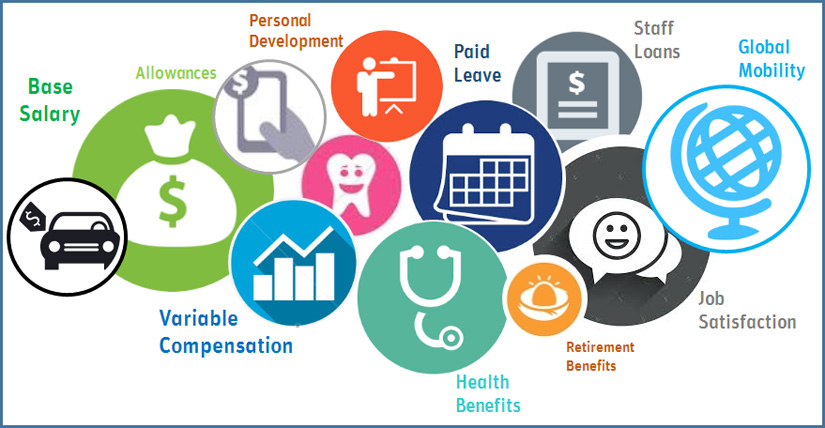 观点
观点
 观点
观点
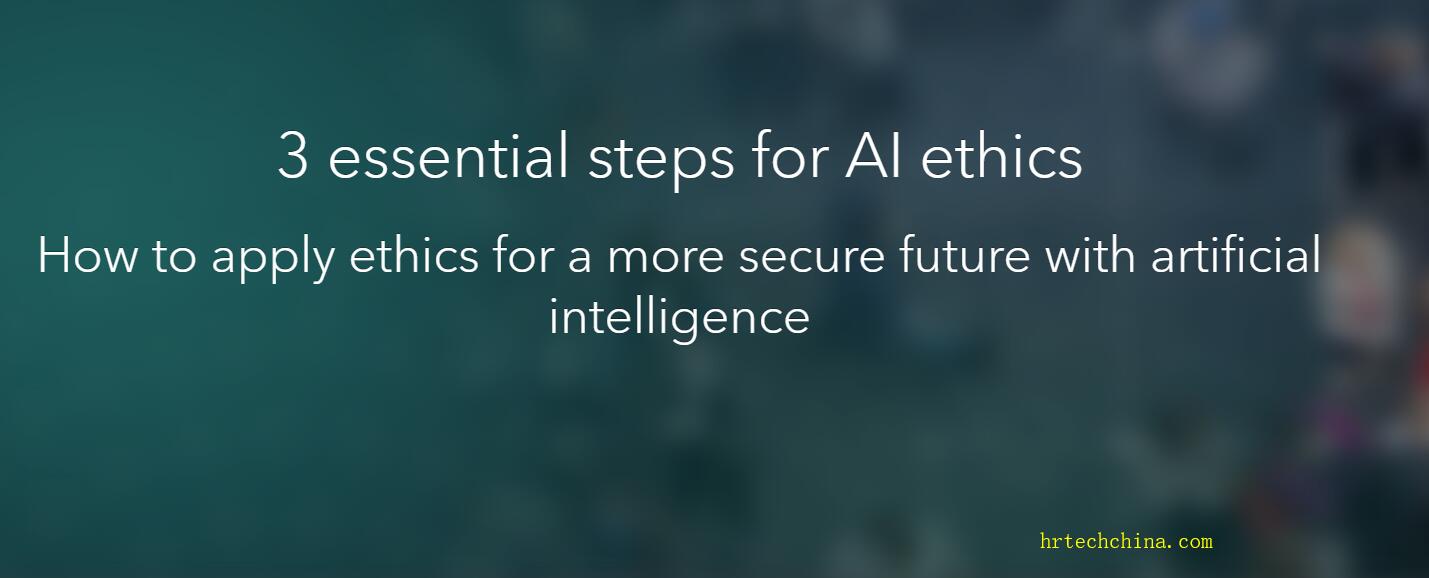 观点
观点
 观点
观点
 观点
观点
 观点
观点
 观点
观点
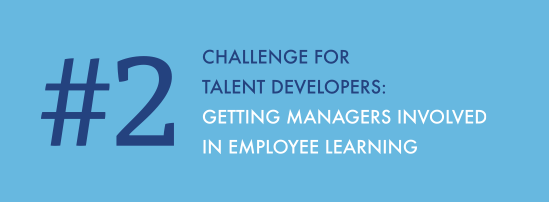 观点
观点





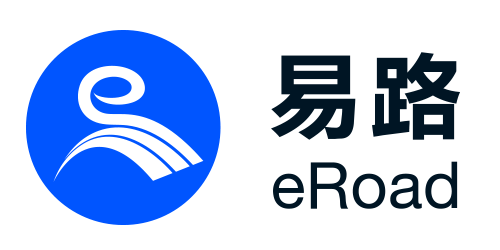
 扫一扫 加微信
hrtechchina
扫一扫 加微信
hrtechchina

